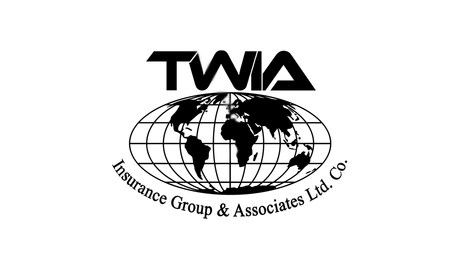Business
Effective Ways to Lower Workers Compensation Costs
Have you been looking for ways to lower your workers’ compensation costs? It’s essential for businesses of all sizes to find effective strategies to reduce these expenses. In this informative article, you will learn some practical tips and strategies to help lower your workers’ compensation costs and improve your bottom line. Let’s dive into the details below:

Understanding Workers Compensation Costs
Workers’ compensation costs can be a significant expense for businesses. These costs include insurance premiums, medical expenses, legal fees, and lost wages for injured employees. By understanding the factors that contribute to workers’ compensation costs, you can take steps to lower them.
Factors Affecting Workers Compensation Costs
Several factors can impact the cost of workers’ compensation insurance for your business. These factors include:
- Industry: Some industries have higher injury risks, leading to higher insurance premiums.
- Claims History: A history of multiple claims can increase insurance costs.
- Employee Classification: Different job roles have different risk levels, affecting insurance rates.
- Safety Measures: Implementing safety measures can reduce the likelihood of workplace injuries.
- Location: Workers’ compensation costs vary by state, depending on regulations and laws.
Understanding these factors can help you make informed decisions to lower your workers’ compensation costs.
Implementing Safety Measures
One of the most effective ways to lower workers’ compensation costs is by prioritizing workplace safety. Implementing safety measures can reduce the frequency and severity of workplace injuries, leading to lower insurance premiums and expenses.
Conduct Safety Training
Provide comprehensive safety training for all employees to ensure they understand how to work safely. Training should cover topics like proper lifting techniques, emergency procedures, and the use of personal protective equipment.
Regular Safety Inspections
Conduct regular safety inspections to identify potential hazards in the workplace. Addressing these hazards promptly can prevent accidents and injuries.
Invest in Safety Equipment
Provide employees with the necessary safety equipment to perform their jobs safely. This may include gloves, helmets, goggles, and ergonomic tools.
By prioritizing safety in the workplace, you can lower the risk of injuries and reduce your workers’ compensation costs.

Managing Claims Efficiently
Efficiently managing workers’ compensation claims can help lower costs and improve the overall process for injured employees. Proper claim management involves prompt reporting, thorough investigation, and effective communication with all parties involved.
Prompt Reporting
Encourage employees to report injuries promptly to ensure they receive timely medical care and support. Delayed reporting can lead to complications and increased costs.
Thorough Investigation
Conduct a thorough investigation of each claim to determine the cause of the injury and prevent similar incidents in the future. Gathering detailed information early on can help you make informed decisions about the claim.
Communication with Employees
Keep employees informed about the status of their claims and provide updates on their treatment and recovery. Open communication can help build trust and improve employee satisfaction.
Efficiently managing claims can streamline the process and lower your workers’ compensation costs over time.
Reviewing Insurance Policies
Regularly reviewing your workers’ compensation insurance policies can help you identify potential cost-saving opportunities and ensure you have adequate coverage for your business needs. Consider working with an insurance broker to evaluate your policies and explore cost-effective options.
Policy Review
Review your current insurance policies to understand your coverage limits, deductibles, and premium rates. Identify any areas where you can make adjustments to lower costs without sacrificing coverage.
Comparing Quotes
Obtain quotes from multiple insurance providers to compare coverage options and pricing. Consider factors like reputation, claims handling, and customer service when selecting a new insurance provider.
Risk Management Programs
Evaluate the effectiveness of any risk management programs offered by your insurance provider. These programs can help you reduce workplace injuries and lower insurance costs over time.
By reviewing your insurance policies regularly, you can identify cost-saving opportunities and ensure you have the right coverage for your business.
Return-to-Work Programs
Implementing return-to-work programs can help injured employees return to work sooner, reduce lost wages, and lower workers’ compensation costs for your business. These programs can provide injured workers with modified duties or temporary assignments until they fully recover.
Modified Duty Assignments
Offer modified duty assignments to injured employees based on their physical limitations. These assignments should be meaningful and align with the employee’s skills and abilities.
Communication with Healthcare Providers
Maintain regular communication with healthcare providers to coordinate the injured employee’s return-to-work plan. Ensure that medical restrictions and limitations are clearly communicated to the workplace.
Evaluation and Adjustments
Regularly evaluate the effectiveness of your return-to-work programs and make adjustments as needed to support injured employees and reduce costs.
By implementing return-to-work programs, you can help injured employees recover more quickly and lower your workers’ compensation costs.
Conclusion
Lowering workers’ compensation costs requires a proactive approach to safety, effective claim management, and regular policy reviews. By prioritizing workplace safety, managing claims efficiently, reviewing your insurance policies, and implementing return-to-work programs, you can reduce expenses and improve the overall health of your business. Remember, investing in safety measures and employee well-being can lead to long-term cost savings and a more productive workforce. By implementing these effective strategies, you can lower your workers’ compensation costs and create a safer, more sustainable work environment for your employees.



